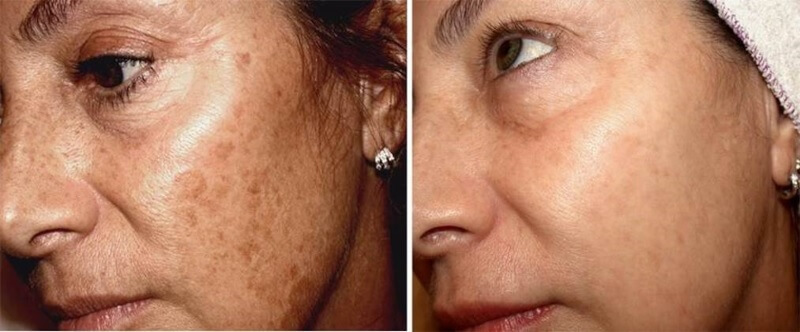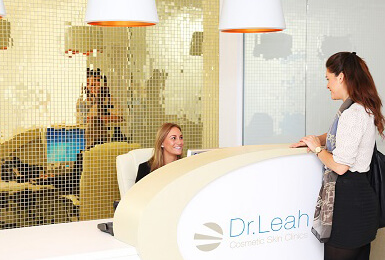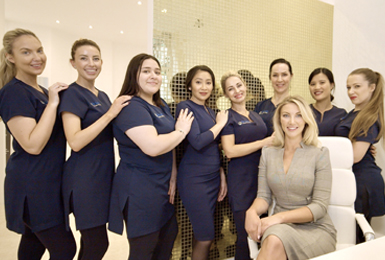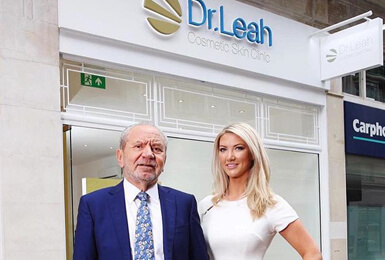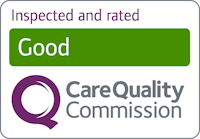Hyperpigmentation can be referred to by many different names including dark spots, age spots, sun spots or just simply uneven skin tone. Regardless of how you refer to this complex skin condition, one thing remains the same - most people who suffer from hyperpigmentation want to reduce or remove it and some are not even sure how it got there in the first place.
Common causes of hyperpigmentation
The signs of hyperpigmentation are certainly easy to spot - they're those brownish patches that give you an uneven skin tone and become more numerous as you get older.
Such dark spots can appear on the face as well as on the hands, shoulders and décolletage, there are many different causes of this common skin concern but the most common are sun exposure, hormones or inflammation.
Sun exposure
The sun’s rays penetrate your skin and stimulate your pigment cells, which are called melanocytes, to produce the pigment known as melanin. This is the skins way of protecting itself from harmful UV rays that can cause damage to cells and even lead to cancer. However, with over exposure to UV these melanocytes go into overdrive and start to produce too much pigment (melanin) which results in an uneven, mottled appearance on the surface of the skin.
Such spots can surface seemingly out of nowhere, although they aren't necessarily as random as may first appear, it is the accumulation of damage from the UV to the melanocyte over many years that eventually leads to dark spots being visible on the skin. It can take as long as 20 years for this damage to take place, which is why most people start to notice them later 30’s, a broad spectrum SPF 30 should be worn daily all year round to prevent this. Worryingly, there is an increase in people much younger concerned with dark spots, this is due to over exposure to sun without adequate protection in the quest for the perfect tan or over use of sunbeds. Luckily pigmentation caused from UV tends to be the easiest to treat.
Hormones
Hormones can wreak havoc with our skin, especially when they fluctuate and change dramatically. This is usually due to factors such as pregnancy, menopause or even severe levels of stress. Change in hormone levels can cause the melanocytes in our skin to become overactive. One example is Melasma or “the mask of pregnancy” as it is sometimes known. This is when pregnant women experience darkening of their skin across their cheeks, forehead and upper lip due to the surge of hormones in their body. Their skin can return to normal once their hormones settle but often they will require treatment to clear it completely, especially if they have been exposed to the sun at the same time.
There are other common potential causes of hyperpigmentationsuch as inflammation and such dark spots are usually harmless, being undesirable from a cosmetic rather than medical standpoint. Rarely, serious conditions like Addison's disease, haemochromatosis and Melanoma (Skin Cancer) – can be the cause and in particular if a mole appears to change in colour, size and texture we would always recommend seeking medical advice.
The best methods for removing dark spots
Recent years have seen the emergence of over-the-counter serums for hyperpigmentation. However, the reality is that unless you are using prescription only based ingredients such as hydroquinone in a safe and tested formula like Obagi the results are going to be minimal. OTC serums are great to brighten and smooth the skin, especially if they include ingredients such as Lactic Acid and Vitamin C. However, these ingredients are not able to penetrate the epidermis far enough to really control the melanocyte and tackle the route of the problem, which leads many people to abandon such products.
Using product can often be expensive and timely, which is why many people are looking for an alternative to tackle this hard to treat condition, lasers can be one such solution for fast effective results.
Here at the Dr Leah skin clinic, we know a thing or two about this area of treatment, we offer safe, state of the art, FDA approved laser technologies to reduce or completely remove dark blemishes.
This pigment busting laser treatment takes just 30 minutes, does not require anaesthetic and unlike traditional ablative laser resurfacing, does not burn the skin's outer layer, thereby minimising redness and downtime. It involves the exposure of a dark spot or pigmented lesion to short pulses of visible light, causing the melanin to shatter and the pigment to be absorbed by the body.
The outcome is less visible or even completely destroyed dark patches, leaving you with brighter, clearer and more even skin tone and with it, greater self-confidence.
Talk to Dr Leah about hyperpigmentation treatment and get a FREE TREATMENT WORTH £250
If you want clear, radiant, youthful skin, contact us now to take advantage of our February offer - purchase 2 Laser Rejuvenation treatment and receive the 3rd FREE worth up to £250 - especially useful given that three treatments are usually required for the optimum results.
Don't hesitate! Our cosmetic experts here at the Dr Leah skin clinic can help to make 2016 the year of a much better-looking, happier and more confident you.
Click here to find out more and book a FREE consultation!
